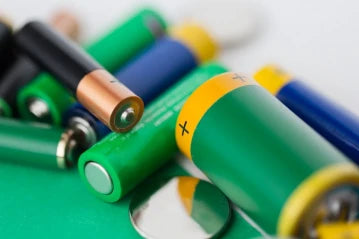
Welcome to our comprehensive guide on connecting solar batteries in series and parallel configurations. As the demand for solar energy solutions continues to rise, understanding how to connect batteries properly becomes essential for maximizing efficiency, performance, and overall system effectiveness. In this blog post, we will delve into the world of battery connections, focusing on series and parallel configurations, and provide step-by-step instructions for each. Whether you are a solar energy enthusiast or a customer looking to purchase solar energy products, this guide will equip you with the knowledge you need to make informed decisions.
Understanding Series Connections
In a series connection, batteries are connected end-to-end, creating a chain-like configuration. The positive terminal of one battery is connected to the negative terminal of the next, and so on. By connecting batteries in series, the total voltage of the system increases while the capacity remains the same. This setup is beneficial when you need higher voltage to power your solar energy system or specific devices.
To connect solar batteries in series:
1. Choose compatible batteries: Ensure that the batteries you intend to connect have the same voltage ratings and capacities.
2. Prioritize safety measures: Before beginning the connection process, wear appropriate protective gear and ensure the batteries are not damaged or leaking.
3. Connect positive and negative terminals: Connect the positive terminal of the first battery to the negative terminal of the second battery. Repeat this process until all batteries are connected.
4. Verify the series connection: Use a voltmeter to measure the total voltage across the first and last battery. It should be the sum of the individual battery voltages.
Series connections are commonly used in solar energy systems to increase the voltage to match the requirements of inverters or other components. However, it's important to note that if one battery in the series connection fails or loses capacity, it can affect the overall performance of the system.
Exploring Parallel Connections
Parallel connections involve connecting batteries in a side-by-side configuration. In this setup, the positive terminals of all batteries are connected together, and the negative terminals are also connected. The capacity of the batteries increases while the voltage remains the same. Parallel connections are useful when you need to increase the overall capacity or run-time of your solar energy system.
To connect solar batteries in parallel:
1. Select batteries with matching specifications: Choose batteries with the same voltage ratings and capacities.
2. Implement safety precautions: Put on safety gear and inspect the batteries for any signs of damage or leakage.
3. Connect terminals in parallel: Connect the positive terminals of all batteries together and the negative terminals together.
4. Confirm the parallel connection: Use a voltmeter to ensure that the voltage across each battery remains the same and matches the individual battery voltage.
Parallel connections are commonly used in solar energy systems to increase the overall capacity, allowing for longer run-times or increased energy storage. However, it's important to ensure that all batteries in the parallel configuration are of the same type and have similar characteristics to avoid imbalances that can affect performance.
Comparing Series and Parallel Configurations
Differentiating between series and parallel connections is crucial to understand which configuration best suits your solar energy needs. In series connections, the total voltage increases while the capacity remains the same. This setup is ideal for powering devices or components that require higher voltages, such as inverters. On the other hand, parallel connections increase the overall capacity while maintaining the same voltage. This configuration is beneficial for systems that require extended run-times or higher energy storage capacity.
When it comes to solar batteries, a combination of series and parallel connections may be employed to achieve the desired voltage and capacity. This hybrid setup allows for customization based on specific system requirements. However, it's important to maintain a balance and ensure all batteries are properly matched to prevent imbalances that can lead to reduced performance and longevity.
Advanced Considerations and Troubleshooting
As you explore more complex setups, there are a few advanced considerations to keep in mind:
1. Mixing series and parallel connections: It is possible to combine series and parallel connections to achieve specific voltage and capacity requirements. However, meticulous planning and ensuring compatibility are essential.
2. Balancing voltage and current: Monitoring and balancing voltage and current across all batteries in a system is crucial to prevent overcharging or discharging.
3. Safety measures and precautions: Always prioritize safety by wearing protective gear, handling batteries with care, and following manufacturer guidelines.
4. Troubleshooting common issues: Be aware of common battery connection issues, such as imbalances, voltage drops, or faulty connections. Regular maintenance and monitoring can help identify and address these problems early on.
Conclusion
Mastering battery connections in series and parallel configurations is vital for optimizing the performance and efficiency of your solar energy system. By following the step-by-step instructions outlined in this guide, you can confidently connect solar batteries to meet your specific voltage and capacity requirements. Remember to prioritize safety, ensure compatibility, and maintain a balanced system. Whether you are embarking on a solar energy project or looking to purchase solar energy products, understanding battery connections will empower you to make informed decisions and harness the full potential of solar energy for a greener future.
Implement these practices today and find the best solar battery here! At Ecgsolax, we understand that the heart of any solar power system lies in the quality of its solar batteries. Whether you’re looking for Powerwall Battery, Stacked Battery, or High Voltage Battery, we’ve got you covered.

0 Kommentare